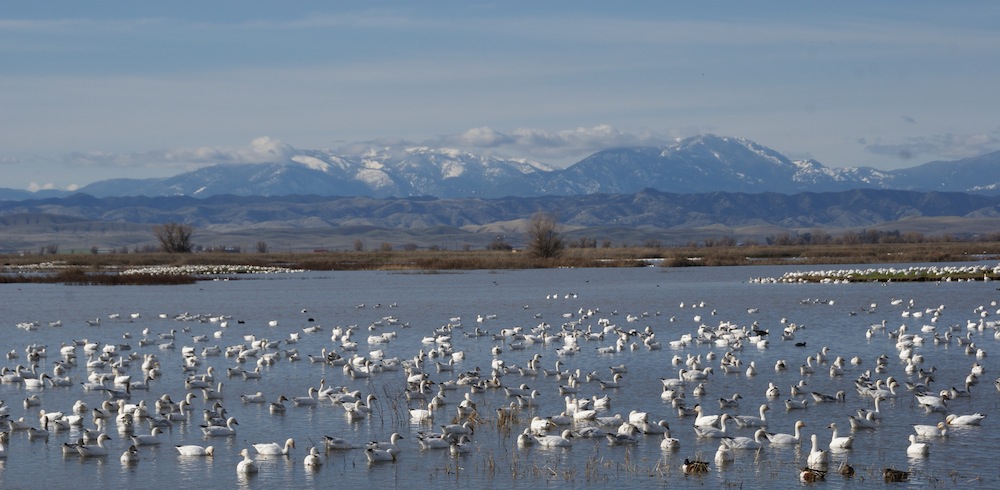
“I’ll probably be gone all night,” announced Wally, opening the closet door and reaching for his uniform coat. “Hiller’s been getting reports of late-night duck shooting east of the refuge.”
It was a Friday evening in late November, 1962. The weather was clear and calm. We had finished dinner and Mom was busy washing dishes. Fish and Game Warden Wally Callan, my father, was 36 at the time. Two years earlier, he had transferred from Marine Patrol, out of Seal Beach, to Orland, a thinly populated farming community at the north end of California’s Central Valley.
“Dad, can I go with you?” I pleaded. “There’s no school tomorrow.” I enjoyed riding on patrol weekends and sometimes after school, when I didn’t have basketball practice. Soon after moving to Northern California, I’d been given a copy of Francis Kortright’s classic, The Ducks, Geese and Swans of North America, and had become fascinated with waterfowl—so much so that at age 14 I could identify just about every duck and goose in North America.
“All right, put your boots on and get your coat. No complaining about how sleepy you are.”
A steady stream of ducks and geese had been migrating south all day, headed for the Willows rice fields. It was about 9:00 p.m. when we reached Willows and turned off on one of the many county roads that crisscrossed the valley. The moon was coming up and I could see silhouettes of ducks and geese in the night sky. Our plan was to find a good spot out west of the Sacramento National Wildlife Refuge and listen for shots. Although waterfowl season was open at the time, taking ducks and geese at night provided poachers, or so-called “duck draggers,” with an unfair advantage and was considered a serious wildlife crime.
In those days, California Fish and Game wardens drove two-wheel-drive Ford sedans, and during the rainy season there was always an element of risk when driving off the pavement. The department’s remedy for getting stuck in the mud was a Handyman jack, found in the trunk of every patrol car. It hadn’t rained for several weeks, so we turned off the county road and proceeded, at a snail’s pace, down a narrow levee that led into one of a hundred flooded rice fields.
“Let’s park here and see if we hear anything,” Dad suggested. Stepping from the patrol car, I was immediately greeted by a symphony of waterfowl sounds. Ducks whistled and whirred overhead as we quietly walked out on the levee under the dim light of a half moon. Unaware of our presence, birds flew so close I could feel the wind from their wingbeats on the back of my neck. There were widgeons, lots of widgeons. Stately pintails swooped in from out of nowhere and speedy little green-winged teal darted back and forth in every direction. What I remember most vividly was a pair of mallards splashing down not 15 yards from where I was standing—quaaack, quack-quack-quack-quack-quack—the raucous hen announcing her arrival. Suddenly there rose a thunderous, ear-splitting clamor, as thousands of ravenous snows and white-fronted geese burst into the air, their shrill honks and repeated cackles—wah, wah-wah-wah—music to this impressionable teenager’s ears. Having rested within the safe confines of the refuge all day, every web-footed wonder in the Pacific Flyway knew it was feeding time and was coming to the party.
Fifty years later, I still get goose bumps—no pun intended—each fall when I see flocks of ducks and geese passing overhead. With each sighting, I harken back to a storybook childhood and my own 30-year career protecting California’s wildlife.
My wife and I make regular day trips to the Sacramento National Wildlife Refuge to admire these magnificent birds, rekindle old memories, and escape the pressures of modern life. This 10,783 acre avian sanctuary, located seven miles south of Willows, California, hosts more than 600,000 ducks and 200,000 geese most winters. Over 300 species of birds, mammals, and native reptiles occupy the refuge complex at some time during the year. It’s a paradise for birds—and for birders.




Send A Letter To the Editors